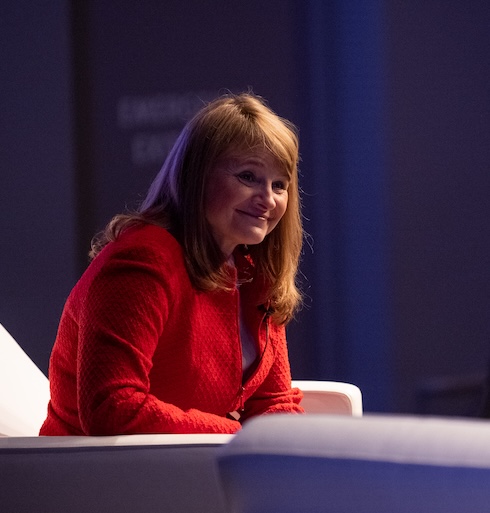Firing Up the Talent Engines at One of the World’s Largest Airlines


When the pandemic hit, businesses and offices began to shut down operations for a rare moment of stagnancy. The travel industry especially took a drastic hit: flights were near-empty as people stayed home.
For one airline, however, the pause was the optimal time to expand. In the first few years of the pandemic, United Airlines hired over 30,000 employees, a decision that differed from many other industries at that time.
“In the months of the pandemic, we pre-hired in a couple of areas, pilots in particular, because of the long training timelines,” Kate Gebo, executive vice president of human resources and labor relations at United Airlines, said in a fireside chat at From Day One’s Chicago conference. “That was not something that we had historically ever done, but in the first few years of the pandemic, we hired 15,000 people each year for two years.”
The choice to increase hiring during the pandemic was ultimately the right move, Gebo says. Revenge travel led to high post-pandemic flight demands and with a shortage of pilots on the horizon, airlines needed to take advantage of every moment to prepare, Gebo told session moderator Stefan Holt, an anchor at NBC5 News.

She reflected on how United Airlines stayed ahead of the game during the pandemic and the strategies she takes to ensure United stays in front. “When we looked at the pandemic, we asked ourselves, ‘Are we going to stay the same or are we going to take this as an opportunity and grow?’” Gebo said. “We didn’t want to come out where we came in, we wanted to jump ahead.”
Fueled by early retirement and an aging pilot population, analysts predict the global aviation industry will be short by 80,000 pilots by 2032. The shortage is a dire situation for airlines as they look to expand. At United, taking learning opportunities in-house became a valuable resource for talent and employees.
“We don't want to just rely on whatever is out there, so we bought our own flight school, United Aviate Academy, in Goodyear, Arizona,” Gebo said. “We wanted to invest and provide world-class training, so you not only learn all the technical issues with flying but also understand the leadership and the culture at United.”
Being a major airline with its own in-house flight school has its perks. The school builds a pipeline of talent for the airline and increases interest in the aviation industry, Gebo says.
“Many other folks began to believe that they could get into aviation,” Gebo said. “Even though there's a little bit of a struggle because the qualifications and the training are tough, there’s a sense of accomplishment that we’re building here at Aviate Academy.”
For United’s pilots and crew members, learning is still readily accessible to the community through designated training centers, Gebo says. “Our pilots have to go back to the training center every six months to up their qualifications or anytime they change aircraft types so during the pandemic, we decided to invest in a flight training center in Denver for our pilots,” Gebo said. “We can't just decide to hire a flight attendant and have them show up the next day, so we also invested in an in-flight training center in Houston for our flight attendants.”
With heightened scrutiny surrounding Boeing planes, production of the planes is taking longer, affecting airline companies as they wait for delivery of aircrafts.
To balance the now-abundance of pilots, United has encouraged their pilots to take time off, an announcement that caused some backlash. But unlike other industries, laying off employees isn’t a viable option, Gebo says.
“Even though Boeing can't deliver an aircraft for us or push delivery of an aircraft, we have already hired those pilots six or nine months ago to make sure we were ready for the original schedule,” Gebo said. “We are oversubscribed on pilots right now and the delay in deliveries is so impactful to us because we are carrying those extra costs.”
Keeping crew members on board is worth it in the long run, Gebo says, reflecting on the company’s choice to hire more during the pandemic.
“Turning the talent engine off is dangerous to your business because once you shut it down, it’s so hard getting the momentum back up,” Gebo said. “In the dark days when there were only 10,000 passengers, the easy answer would have been to shut it all down, but thank goodness we absolutely didn't.”
Wanly Chen is a writer and poet based in New York City.
The From Day One Newsletter is a monthly roundup of articles, features, and editorials on innovative ways for companies to forge stronger relationships with their employees, customers, and communities.